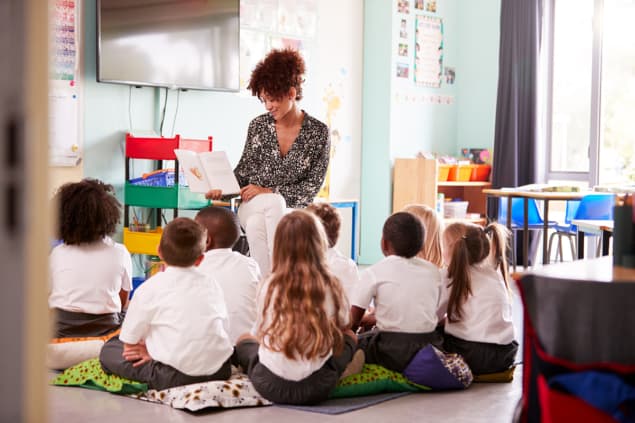As children narrow down their career interests from an early age, Carol Davenport says it is important that they are brought up with a positive attitude towards science

Think back to your childhood. What did you want to be when you grew up? In primary school I wanted to be a special-effects designer. I even wrote a letter to the BBC asking how to be one, to which they replied I should study physics and design technology as well as draw and make models in my spare time. Fast-forward many years and – although I am not a special-effects designer – I am a physicist working at NUSTEM, which aims to increase the diversity and number of young people choosing STEM (science, technology, engineering and maths) careers.
If you ask young children today what they want to do for a job, they will give a relatively narrow range of possible careers. Last year, we asked more than 600 children between the ages of seven and 11 that question, finding that the 20 most mentioned jobs accounted for 75% of all aspirations. They included doctor, vet, sports coach and police officer. Of course, this makes sense – children will only know about a few jobs, often those they hear about or see around them at home or at school.
Children will only know about a few jobs, often those they hear about or see around them
More worryingly, however, was that although some jobs were mentioned by boys and girls, career aspirations were strongly gendered. Footballer and YouTuber, for example, were the most popular careers given by boys, while vet and teacher were most popular with girls. In fact, our earlier research on career aspirations in primary school showed that children are making choices about what they don’t want to do before they are eight years old (International Journal of Science Education 42 764). We therefore must talk to children about future jobs and careers much earlier than has traditionally been the case.
It’s good to talk
Parents and families are strong influences on a child’s attitudes and interests. Those who did not study science beyond the age of 16 can feel that science is about “knowing stuff”. This might mean that when their child wants to talk to them about an aspect of science or asks a good science question, families are uncomfortable and close the conversation down. Indeed, many pre-school children are fascinated by science topics such as space, and might want to “become an astronaut” to follow up their interest, but parents might not feel confident talking to their child about space and its mysteries, or about how there are lots of jobs linked to space exploration that go beyond astronaut. Without encouragement, the child may subconsciously think this means that science is not for them or their family. Over time, these interactions steer children away from a career related to science.
At NUSTEM, we have been developing story time activities for nursery-aged children and their families. Although we do not directly talk about careers in the session, we try to make conversations about science, technology, engineering and maths “normal” in the family. By working and playing together, the children and adults enjoy the story and activity and then ask each other questions. The aim is to help families to discover that science – and of course physics – is about asking good questions and deciding on good ways of finding out answers to those questions.
With funding from the UK Space Agency, I recently wrote a storybook called Are We Nearly There Yet? It features the ExoMars Rosalind Franklin rover that is set to launch in 2022, arriving at Mars a year later. In the story, Rosie the Rover is heading to Mars but wakes up due to a solar storm. To help her get back to sleep, Mission Control tells her about all the other robots on other missions. This simple story is easy enough for children to understand and links to a love of space that many of them already have.
During a family session, a facilitator first reads the story before encouraging parents and children to re-read it. They then use building blocks to create their own space robot and make a pretend surface of Mars for it to travel on, with the facilitator modelling the sorts of questions that families could ask to help them explore the story and the science a bit more.
When we evaluated the project, we found that after the parents and carers had taken part, they felt more confident talking about space with their children. Of course, this sort of activity does not have to be an organized event. Families can encourage children to ask questions about their storybooks, build models or draw pictures about whatever they are reading. It can be any story book, and we have gathered together a list of more picture books with a science theme for young children.
Starting young
Although career choices seem a long way off, I believe parents and families can help their children to be aware of the broadest range of possible careers as they grow up. We know that in more normal times, many primary schools welcome visitors to talk to children about their jobs and what they do, often under the title of “people who help us”. However, these visitors tend to be people such as local police officers, healthcare workers and fire-fighters. If you are a STEM professional, I would encourage you to talk to children in primary schools about yourself, and your job. In that way, we can help children see that science is often about asking questions and finding solutions to problems and that it can be done by “people like them”.



